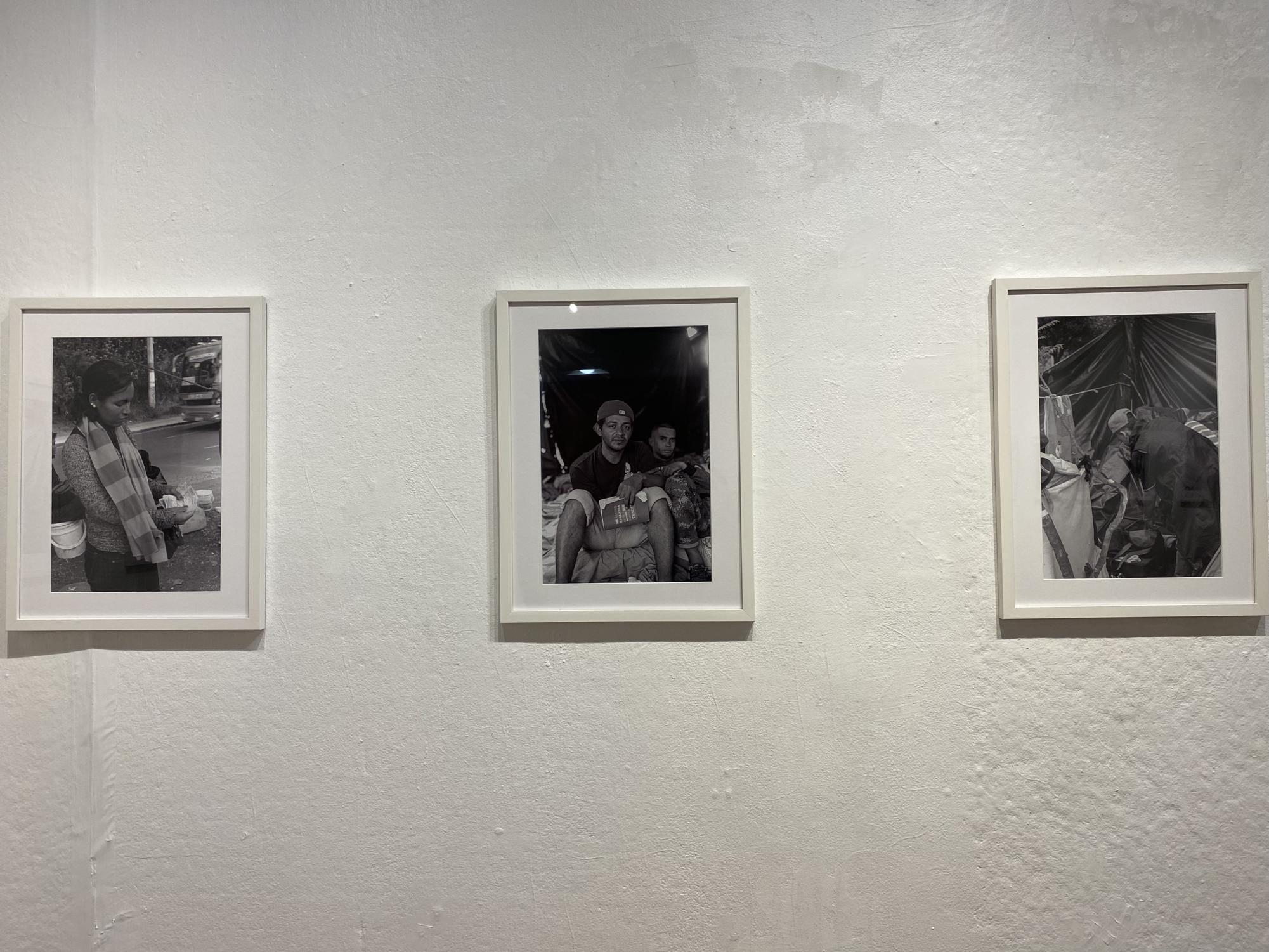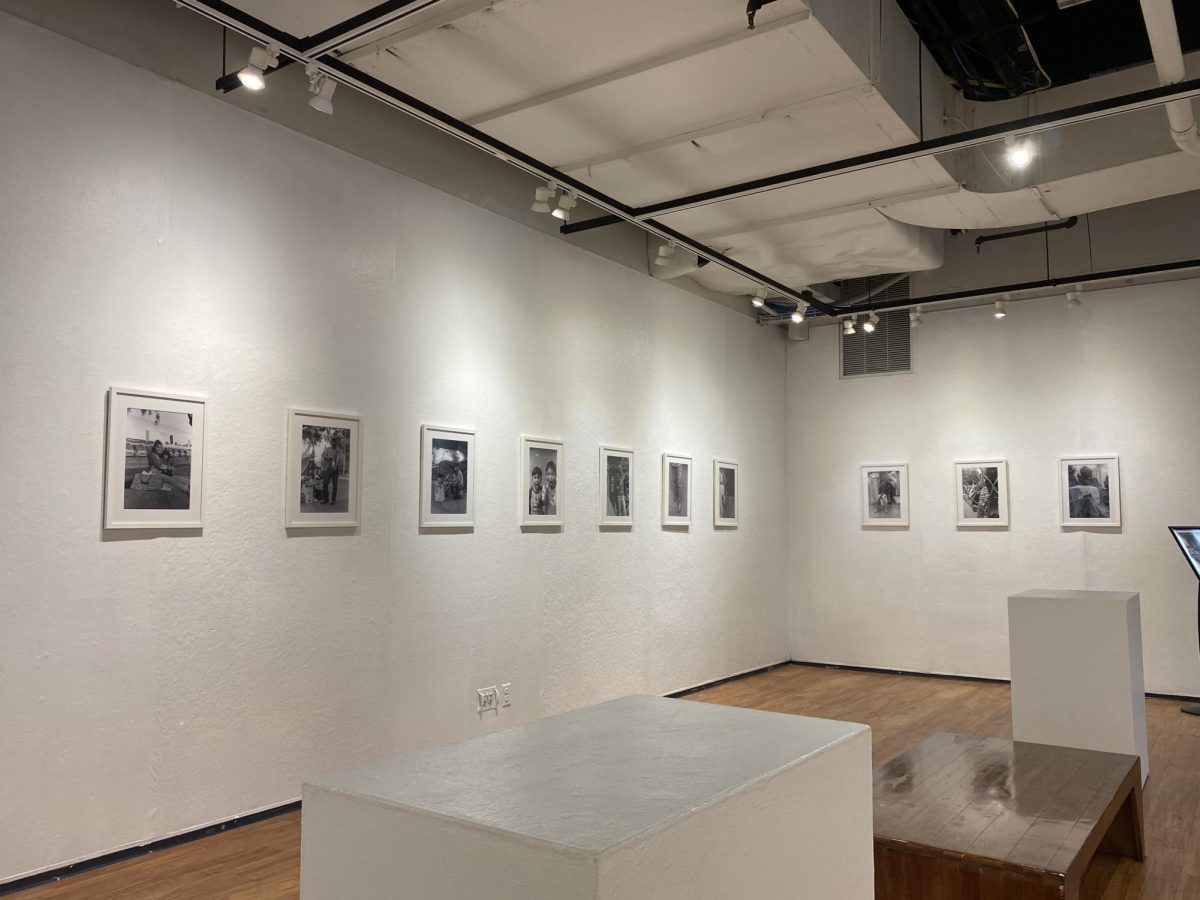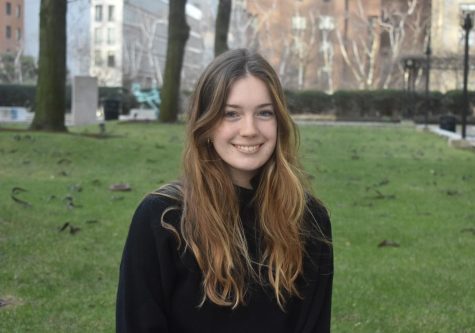For Joel De Andrade Ledesma, Graduate School of Arts and Sciences ’13, photography serves as both a medium and a critical tool for social intervention, community work and advocacy. His debut exhibition at Fordham Lincoln Center’s Lipani Gallery, titled “Carcelén,” opened to the public on Jan. 19 and features 18 incisive photographs taken in Ecuador.
The Venezuelan photographer portrays his subjects — people and the ad hoc environment in which they create community — with honesty and compassion. His eye is discerning, and his camera, a deftly-wielded Pentax K1000, captures the complex realities of life at a refugee camp.
“Carcelén” is the fruit of many years of community work. The artist’s academic, professional and creative backgrounds in social engagement and advocacy for BIPOC groups — including his time as an administrator and organizer of Fordham’s Collegiate Science and Technology Entry Program and Center for Community Engaged Learning programming — served as a foundation for the project.
In the summer of 2018, after an extended period of dialogue and exchange with community leaders, De Andrade Ledesma embarked on a personal project at a refugee camp adjacent to the Carcelén bus stop in Northern Quito, Ecuador. The camp was populated by Venezuelan migrants, many of whom had traveled by foot to Ecuador hoping to continue further north — some individuals were linked by their common place of origin, but others made the arduous trip alone.
Participation in a cooperative, mutual aid network was De Andrade Ledesma’s primary concern; photography came secondary to authentic engagement with the refugee camp’s inhabitants. The processes of documentation and mutual aid were inextricably linked, according to the artist.
“I love to talk to people. I love to be with people. I love to hear stories,” De Andrade Ledesma said. “The process was, like, really being at the camp … I think the full spectrum of emotion is displayed here because I was able to spend time with (the images’ subjects).”
He considers migration a universal experience beyond language: Images convey an atmosphere and humanity that words often cannot.
In Quito, De Andrade Ledesma encountered a community characterized by formidable resiliency. The migrants with whom he engaged fostered a fiercely persistent community, in spite of their precarious circumstances. Reciprocity and collectivity, the artist noted, permeated daily life and evidenced themselves in “Carcelén.”
“In Spanish, we have this word called ‘convivencia.’ It’s like sharing space together. Conviviality is the word in English,” De Andrade Ledesma said. “So that the cameras and me taking pictures doesn’t become the center of what we’re doing, right? We’re actually sharing stories, we’re actually holding space, we’re actually for no reason at all just gonna help each other and hear each other out about different experiences.”
De Andrade Ledesma sought merely to document the refugee community in the spirit of generating critical conversations and promoting visibility; he was fervently opposed to romanticizing the camp, and while his images are indisputably beautiful, they primarily construct an honest picture of the refugee experience.

(ANUM ANSARI)
The images needed to evidence the conviviality and strength of the migrant community. Stephen Apicella-Hitchcock, one of the curators involved in “Carcelén’s” production, noted that the selection of 18 photographs exhibits the range of human emotion and resists homogeneity.
“There are pictures that (convey) a sense of promise, hope and joy … that show that even when one does not have money or is basically migratory, there still could be moments of joy and beauty,” Apicella-Hitchcock said.
De Andrade Ledesma echoed this sentiment, noting that the selection of 18 images, chosen painstakingly from a larger collection of over 200 shots, are intended to honor the humanity and tenacity of his subjects. Many of the photographs are portraits — a particularly striking image features a pair of young boys whimsically addressing the camera with their tongues out — but others exclusively capture the camp’s built environment. One such image features a white wedding tent, repurposed or recontextualized in the migratory landscape.
“We’re actually sharing stories, we’re actually holding space, we’re actually for no reason at all just gonna help each other and hear each other out about different experiences.”
“The range of emotion is real and palpable, and even some folks here,” the photographer noted, gesturing to an image of two individuals regarding the camera. “You can see on their face the stress of their circumstances, but (they) still were able to laugh, were able to connect, were still very in a collective mindstate.”
The artist found a unique resonance with the community represented in “Carcelén”; he, too, emigrated from Venezuela during an insurrection — albeit amid different circumstances — and this commonality proved itself to be an asset in his process. He considers migration a universal experience beyond language: Images convey an atmosphere and humanity that words often cannot.
De Andrade Ledesma insisted that the collection paint a holistic picture of everyday life at the camp, which meant including images of humans and the material world in which they occupied space. Makeshift architectural structures, assembled with tarpaulin, rope, textile and found objects, serve as a backdrop for the routine activities of migratory life. The clarity of De Andrade Ledesma’s images emphasizes the makeshift nature of the refugees’ environment and the community’s efforts to construct a home in a transitory context.
Allusions to movement, some subtle and others explicit, underscore the ensemble. “We thought this emphasis that obliquely hints at feet, bipedalism, movement, travel is all useful … in support of a greater narrative about people that are migrants, that are… trying to move from A to Z,” Apicella-Hitchock stated.
De Andrade Ledesma hopes that “Carcelén” will inspire conversations at Fordham and in the greater New York City community surrounding migration and diaspora. “Carcelén” is an earnest testament to Venezuelan migrants’ vitality, which remains unwavering even under duress, and their capacity to foster community amidst fluctuant circumstances.
“Carcelén” is on display in the Lipani Gallery through Feb. 6.



